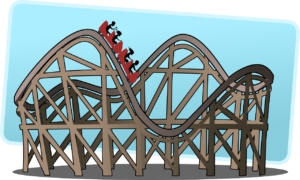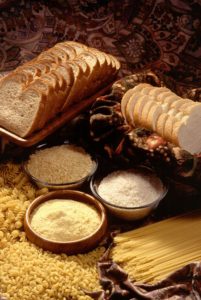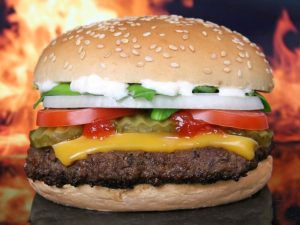Blood Sugar Imbalance and its Impact on your Mental Health
Riding the blood sugar roller coaster day after day can impact your mental health. The highs followed by crashes may accentuate the symptoms of a mood disorder. Research has tied processed, refined sugar consumption to an increased risk of depression and can worsen the outcomes of schizophrenia.
Blood sugar in the form of glucose is the basic fuel for all brain operation and activity. If it is inadequate, mental health systems can start to shut down. Glandular imbalances will result as the glands struggle to regulate the sugar level. This can cause symptoms such as high adrenaline which can look like anxiety, panic attacks or violence.
Just by making tweaks to your diet you can improve your blood sugar regulation and your mental health.
And just because your fasting glucose on lab work is within range, does not mean that throughout a day you are experiencing highs and lows with your blood sugar.
The Impact of Blood Sugar Dysregulation on our Mental Health
By now, most of know that sugar and processed foods are bad for our heart, cholesterol and waistline. But not as much attention is giving to what it does to our brain.
Here is what Happens
- You eat a meal or have a drink with excess sugar. Say you start your day with a bagel, muffin or donut, or have cereal with milk, banana and some OJ.
- The pancreas releases insulin to bring glucose to the cells but because of the high amount of sugar, the insulin response is excessive
- About 2 hours later so much sugar has been put into storage that you now have low blood sugar and are feeling weak, shaky, brain fog, fatigue, change in mood (depression) and cravings
- The body responds to this as an emergency so it dumps adrenaline into the system. This causes anxiety, racing heart, irritability, anxiousness, panic, outbursts and more
- You reach for a processed carb or sugar product to get your sugar levels back up. Thus, the cycle begins again.
This cycle contributes to chronic inflammation in the body. Chronic inflammation is not only associated with physical health conditions such as heart disease but also with brain function such as depression, anxiety, angry outbursts and brain fog.
A surge of adrenaline is not always a bad thing. In prehistoric times if you were being chased by a wild animal you got a surge of adrenaline to run away. Adrenaline prepares you for vigorous muscular activity. It raises your heart rate and turns off digestion so now you are prepared for fight or flight. In modern society it is not the wild animal that raises our adrenaline but instead the constant demands we put on our body such as stress from our processed, nutrient deficient, highly processed diet.
Symptoms of Imbalanced Blood Sugar (highs and lows)
- Fatigue, weakness
- Abnormal weight (too high or too low)
- waking after 2-3 hours of sleep at night and cannot fall right back to sleep
- Dizziness
- headaches
- irritability if meals are missed
- nervous habits
- depression
- anxiety
- phobias
- violent outbursts
- Unable to concentrate (ADD)
- Anti-social behavior
- Crying spells
- Nightmares
- confusion
- tightness in chest
- constant hunger
- tremors
- obsessive compulsive behavior
- poor word finding ability
- brain fog
- blurred vision
- insomnia
- cravings for sugar, sweets, soda, coffee, alcohol, refined carbs
- fainting
- cannot tolerate bright lights or loud sounds
- joint pain
- no appetite at breakfast, may wakeup feeling nauseous, skip breakfast
- highs and lows/mood swings within a one day period
What Causes Blood Sugar Dysregulation (in addition to diet)
- Standard American diet
- Inadequate physical activity
- Irregular eating patterns
- Skipping meals
- Eating imbalanced meals (meals with mostly refined carbs and little in the way of quality protein/fats)
- Refined carbs (bagels, pasta, muffins, cookies, pastries, donuts, bread, rolls, etc.)
- Gluten intolerance and other food allergies/insensitivities
- Excess caffeine intake
- Alcoholism
- Endocrine disorders
- Thyroid disorder
- Stress
- Excess blood sugar lowering medication
- Insulin resistance
- Birth control pills
- Fructose
Physical Symptoms of Blood Sugar Imbalance
- Darkened skin along jawline or neck (this occurs due to elevated insulin levels present with elevated blood sugar)
- Extra abdominal fat-this can include fat on back, chest, sides of waist and shoulder blade area
- Base of neck fat pad-this fat tends to be very inflammatory
- Enlarged breasts in men (elevated blood sugar in men stimulates activity of enzymes that shifts testosterone to estrogen which promotes growth of breast tissue)
- Note: you may not always see these physical signs
How to Balance Blood Sugar
Some foods that will help to balance blood sugar include almonds (very filling), quinoa (great substitute for rice), millet (it has a combination of fiber and phytonutrients), hummus (protein packed), avocado (filled with healthy fat), lentils (good source of protein) and walnuts (make a great snack with omega 3’s).
Consume foods that release energy slowly into the blood stream such as vegetables, berries, and nuts and seeds.
Addressing blood sugar imbalances involves a combination of dietary and lifestyle measures that minimize the shock to the pancreas and the adrenal glands and stabilize carbohydrate metabolism. It is better to address it now because highs and lows in blood sugar will eventually lead to highs only (meaning diabetes and insulin resistance)
- Decrease the consumption of simple carbs and sugars, caffeine, alcohol,
- Eat three meals per day and 2 additional snacks if need be early on while working on balancing blood sugar and while getting the hang of eating healthy foods. DO NOT SKIP MEALS (once you have balance blood sugar then you can try intermittent fasting)
- Provide a balance at each meal/snack of protein, complex carbs, healthy fats and fiber.
- Eat foods closer to the form they are found in nature.
- This can look like:
o a protein smoothie with avocado and greens included for breakfast (skip the fruit or add in berries or ½ a banana)
o snack on handful of almonds mid-morning
o for lunch have chicken salad on a bed of lettuce (if you must have bread, opt for one slice only) with a Bubbies pickle and a side salad
o mid-day snack on raw vegetables and hummus
o for dinner have salmon, roasted sweet potato and a vegetable such as asparagus, broccoli or cauliflower.
o AVOID packages foods, sugary foods, artificially sweetened foods and drinks, refined carbs such as pasta and bread, white rice, dried fruits such as banana or apple chips and processed corn products
Beneficial Nutrients
- Protein: it is used to mitigate the symptoms of hypoglycemia because it can keep sugar stable while keeping metabolism high. Protein takes longer to be digested than simple carbs and this will prevent sudden drops and spikes in blood sugar levels. The glucose from digested protein (and from complex carbs is released into the bloodstream gradually which helps to regulate blood glucose levels.) Consume 2-4 ounces of animal protein or 4-6 ounces of plant protein at each meal. For snacks reduce the amount to half. Protein amounts at breakfast can be slightly increased. High quality sources of protein include grass fed meats, wild caught fish, bean/legumes and raw dairy.
- Cobalamin (B12): along with other B vitamins helps to convert consumed foods into glucose that can be utilized by the body. Thus, a B12 deficiency can result in low blood sugar levels. Eating foods rich in B12 will help to increase energy levels by converting food into glucose. Best forms include methylcobalamin, adenosycobalamin and hydroxocobalamin. Food sources include grass fed beef, lamb, chicken, wild game, organ meats, grass fed milk, cottage cheese and fish/shellfish.
- Niacin (B3): It is needed to produce insulin. It helps to promote proper digestion by helping with the production of stomach acid used in the metabolism of carbs. It can also be useful for treating depression and anxiety associated with hypoglycemia. Niacin will cause a “flush” within minutes of ingesting. Food sources include fish, meats, peanuts, whole grains mushrooms, seeds, eggs and almonds. Check with your doctor. before taking, as it can interact with some medications.
Bottom Line:
Just because you do not have diabetes does not mean you are safe from blood sugar ups and downs. Balance your blood sugar by eating protein and fat along with your complex carbs. Don’t skip meals and opt for a diet of 80% whole foods and 20% of your processed, junk food. If you are suffering from any mental health disorder, this is a simple step to take.
References
- https://www.psychologytoday.com/blog/where-science-meets-the-steps/201309/4-ways-sugar-could-be-harming-your-mental-health
- http://www.alternativementalhealth.com/conquering-anxiety-depression-and-fatigue-without-drugs-the-role-of-hypoglycemia-2/
- http://diabeteslibrary.org
- http://www.askdrmaxwell.com/hypoglycemia-causes-and-natural-treatments/
- http://articles.mercola.com/sites/articles/archive/2009/12/22/how-eating-sugar-can-cause-mental-illness.aspx
- Golan, R. (1995) Optimal Wellness. New York: Ballantine Books.





Leave A Comment
You must be logged in to post a comment.